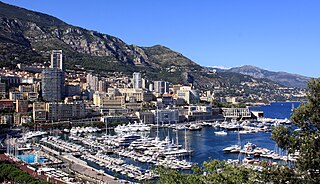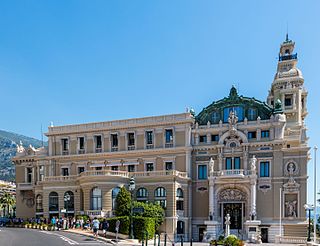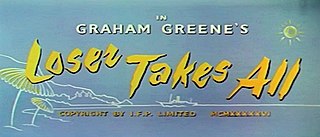
Monaco, officially the Principality of Monaco, is a sovereign city-state and microstate on the French Riviera a few kilometres west of the Italian region of Liguria, in Western Europe, on the Mediterranean Sea. It is a semi-enclave bordered by France to the north, east and west. The principality is home to 38,682 residents, of whom 9,486 are Monégasque nationals; it is recognised as one of the wealthiest and most expensive places in the world. The official language is French; Monégasque, English and Italian are spoken and understood by many residents.

Monte Carlo is an official administrative area of Monaco, specifically the ward of Monte Carlo/Spélugues, where the Monte Carlo Casino is located. Informally, the name also refers to a larger district, the Monte Carlo Quarter, which besides Monte Carlo/Spélugues also includes the wards of La Rousse/Saint Roman, Larvotto/Bas Moulins and Saint Michel. The permanent population of the ward of Monte Carlo is about 3,500, while that of the quarter is about 15,000. Monaco has four traditional quarters. From west to east they are: Fontvieille, Monaco-Ville, La Condamine, and Monte Carlo.

The Opéra de Monte-Carlo is an opera house which is part of the Monte Carlo Casino located in the Principality of Monaco.

James Francis Harry St Clair-Erskine, 5th Earl of Rosslyn, styled Lord Loughborough until 1890, was a Scottish soldier, author and aristocrat.

Broxbourne is a town in the Borough of Broxbourne in Hertfordshire, England, with a population of 15,303 at the 2011 Census. It is located to the south of Hoddesdon and to the north of Cheshunt, 17 miles (27 km) north of London. The town is near the River Lea, which forms the boundary with Essex, and 5 miles (8.0 km) north of the M25 motorway. To the west of the town are Broxbourne Woods, a national nature reserve. The Prime Meridian runs just east of Broxbourne.
Lucky Stiff is a musical farce. It was the first collaboration for the team of Lynn Ahrens and Stephen Flaherty (music). The show is based on the 1983 novel The Man Who Broke the Bank at Monte Carlo by Michael Butterworth. It was created and performed at Playwrights Horizons off-Broadway in 1988, and won the Richard Rodgers Award for that year. The musical was seen in London's West End in 1997 but has not had a Broadway production. A film version had a limited release in theatres in 2015 but received mostly negative reviews.

Colin Whitton McCallum, known by his stage name Charles Coborn, was a British music hall singer and comedian. During a long career, Coborn was known largely for two comic songs: "Two Lovely Black Eyes", and "The Man Who Broke the Bank at Monte Carlo."

The Monte Carlo Casino, officially named Casino de Monte-Carlo, is a gambling and entertainment complex located in Monaco. It includes a casino, the Opéra de Monte-Carlo, and the office of Les Ballets de Monte-Carlo.

Man of the Moment is a 1935 British comedy film directed by Monty Banks and starring Douglas Fairbanks Jr., Laura La Plante and Margaret Lockwood. It was made at Teddington Studios by the British subsidiary of Warner Brothers. The film's art direction was by Peter Proud.

The Man Who Broke the Bank at Monte Carlo is a 1935 American romantic comedy film made by 20th Century Fox. It was directed by Stephen Roberts, and starred Ronald Colman, Joan Bennett, and Colin Clive. The screenplay was written by Nunnally Johnson and Howard Smith, based on a play by Ilya Surgutchoff and Frederick Albert Swan. The film was inspired by the song of the same name popularised by Charles Coborn.

Loser Takes All is a 1956 British comedy film directed by Ken Annakin, starring Glynis Johns, Rossano Brazzi, and Robert Morley, with a screenplay by Graham Greene based on his 1955 novella of the same name.
The Société des Bains de Mer, officially the Société Anonyme des Bains de Mer et du Cercle des Etrangers à Monaco, is a publicly traded company registered in the Principality of Monaco. SBM owns and manages the Monte Carlo Casino, the Opéra de Monte-Carlo, and the Hôtel de Paris in Monte Carlo.

"The Man Who Broke the Bank at Monte Carlo" is a popular British music hall song published in 1891 by Fred Gilbert, a theatrical agent who had begun to write comic songs as a sideline some twenty years previously. The song was popularised by singer and comedian Charles Coborn.

North Sheen Cemetery is a cemetery in Kew in the London Borough of Richmond upon Thames. It is managed by Hammersmith and Fulham Council.
The Man Who Broke the Bank at Monte Carlo may refer to:
The Monte Carlo Casino was inaugurated in 1863. Since then the bank has been broken on a number of occasions. The expression "breaking the bank" is used when a gambler wins more money than the reserve held at that particular table in the casino. At the start of each day, every table was funded with a cash reserve of 100,000 francs – known as "the bank". If this reserve was insufficient to pay the winnings, play at that table was suspended while extra funds were brought out from the casino's vaults.
"George and Alfred" is a short story by P. G. Wodehouse and a Mr. Mulliner story. It was published in Playboy magazine in the US in January 1967. The story was also included in the 1966 collection Plum Pie.

Joseph Hobson Jagger was an English textile industry businessman from Yorkshire, who in around 1881 is said to have "broken the bank at Monte Carlo" by identifying and exploiting biases in the wheels of the roulette tables there. He used his winnings to buy property in Bradford. In 2018 he was the subject of a biography by his great-great niece Anne Fletcher.

Marie Charlotte Blanc was a German socialite and businesswoman. She was a prominent member of high society in Monaco and France. After the death of her husband, François Blanc, she operated the Monte Carlo Casino.
Frederick Younge Gilbert was an English theatrical agent and writer of music hall songs.

















